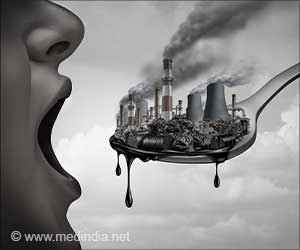Majority of drivers don't believe that texting while driving is dangerous in certain driving scenarios, a recent research finds. This finding may contribute to more targeted distracted driving campaigns by highlighting opportunities for interventions.

‘Many drivers don’t perceive texting while driving as something dangerous. Among drivers who use the phone while driving, a majority of them are likely to talk on their phones while driving instead of texting.’





In the U.S., mobile phone usage has been a factor in one quarter of all car collisions. However, actual crash risks vary based on the type of task being performed and the extent of its cognitive and physical demands on the driver. Talking on a mobile device increases crash risk by 2.2 times whereas texting increases risk by 6.1 times.Observational studies have found that as many as 18 percent of drivers in high-income countries, and up to 31 percent in low- and middle-income countries, use their mobile devices while on the road, contributing to significantly reduced road safety. Despite laws prohibiting such behavior, mobile phone use while driving is expected to increase.
In the study, "Should I text or call here? A situation-based analysis of drivers' perceived likelihood of engaging in mobile phone multitasking," researchers found that drivers who are female, are frequent users of phones for texting/calling, have negative attitudes towards safety and are highly disinhibited report much stronger intentions of engaging in distracted driving. The research team included Oscar Oviedo-Trespalacios, Md. Mazharul Haque and Mark King from Australia Queensland University of Technology, and Simon Washington from the University of Queensland.
The researchers found that drivers engage in self-regulation when deciding whether to use their phones while driving, which is a process through which individuals develop strategies to cope with environmental factors while maintaining a high level of performance. For example, many drivers make use of stops to initiate using their mobile device, and many are able to restrain themselves to using phones only while stopped at intersections with signals. Many other researchers have also noted that drivers usually restrict engagement in heavy traffic or along curved sections of both urban and rural roads. This study sought to identify what factors contribute to self-regulation.
In the study, 447 drivers in South East Queensland, Australia, answered questions about perceived crash risk, perceived driving comfort, perceived driving difficulty, perceived driving ability, perceived likelihood of engaging in a voice call and perceived likelihood of engaging in texting.
Advertisement
The researchers also found that drivers who hold the following beliefs are more likely to use a mobile device while driving: effects on driver are minor; I need a lot of convincing to believe it is dangerous; effects will last after the task is finished. Sixty-eight percent of participants reported needing a lot of convincing to believe in the dangers of texting and driving. However, demanding traffic conditions and the presence of law enforcement were reported as effective measures in reducing the likelihood of distracted driving. These results support high-visibility police enforcement programs as a means to combat distracted driving.
Advertisement
Drivers were much more likely to talk on their phones while driving than they were to use their phones to text. This is expected since the visual demands of texting compete directly with those of driving, whereas talking on the phone is mostly auditory.
The results from this study may contribute to more targeted distracted driving campaigns by highlighting opportunities for interventions. These campaigns should target safety attitudes to more effectively curb drivers' motivations for engaging with their phones while driving. This study also confirmed the need to profile and target high-risk groups, particularly novice drivers and those who are overly attached to their phones, to develop messaging that considers their particular motivating factors.
Source-Eurekalert











